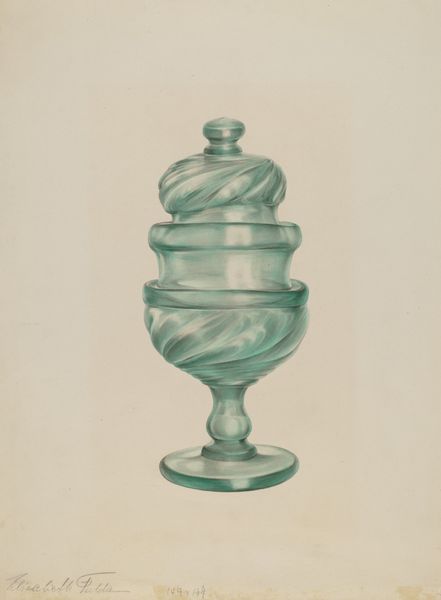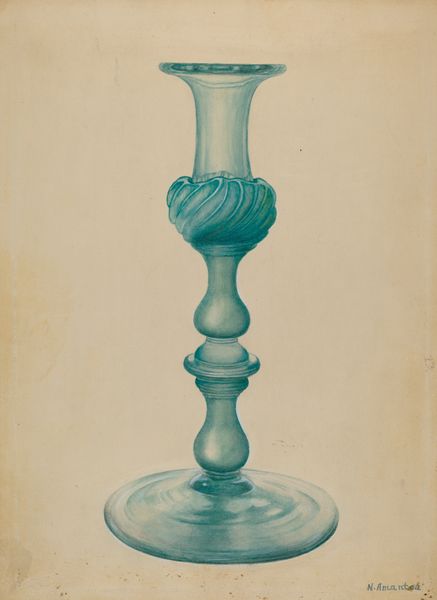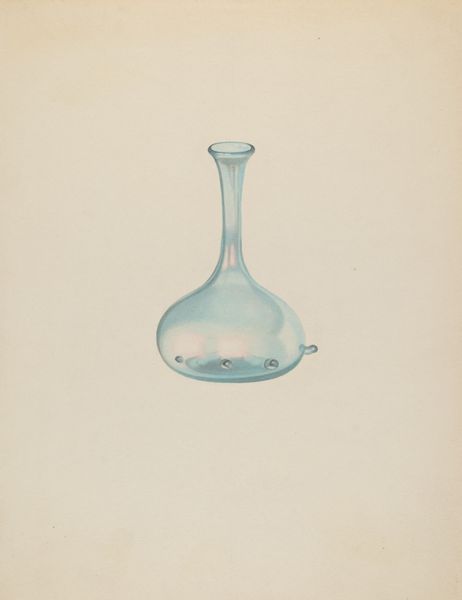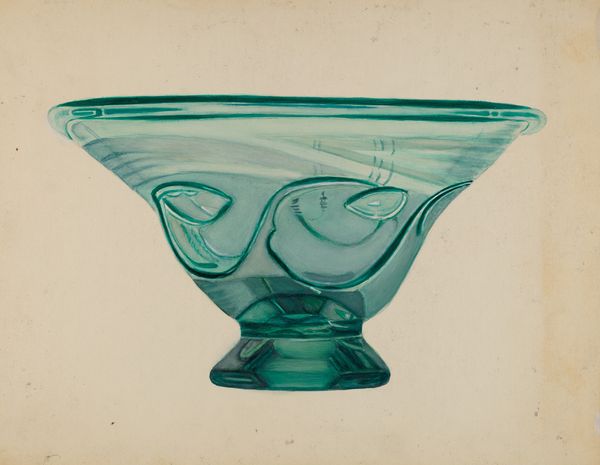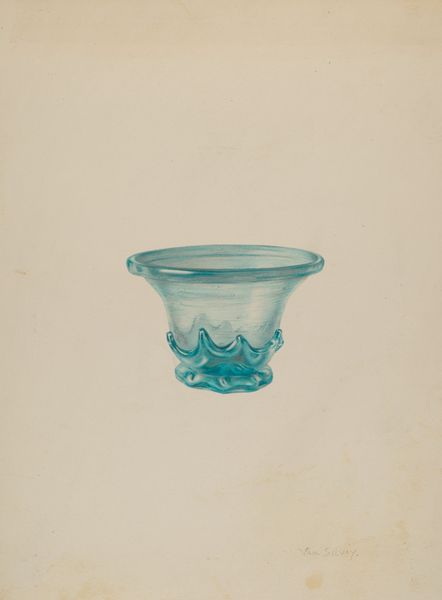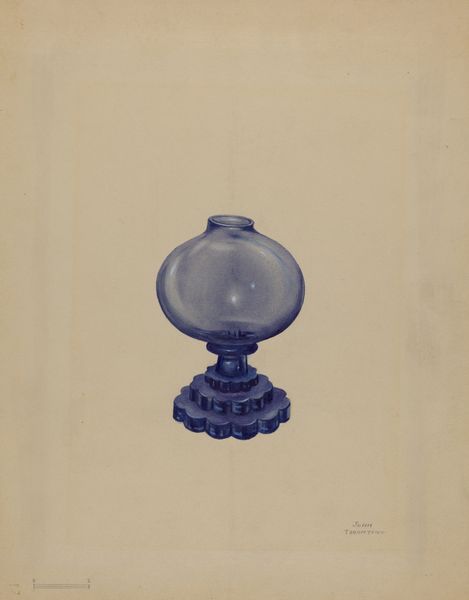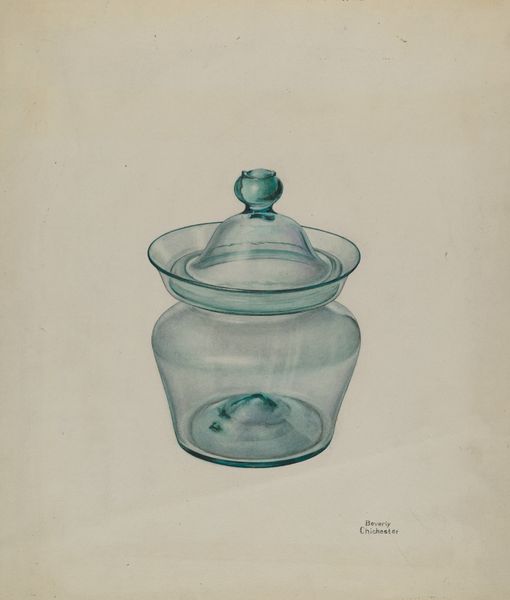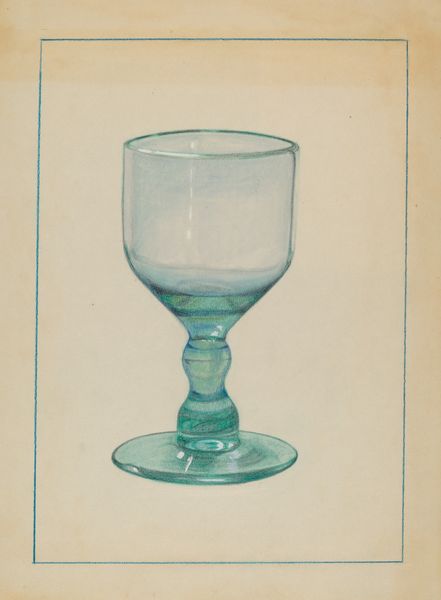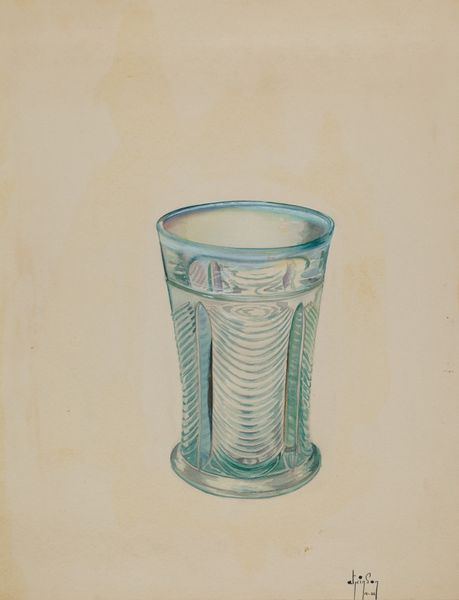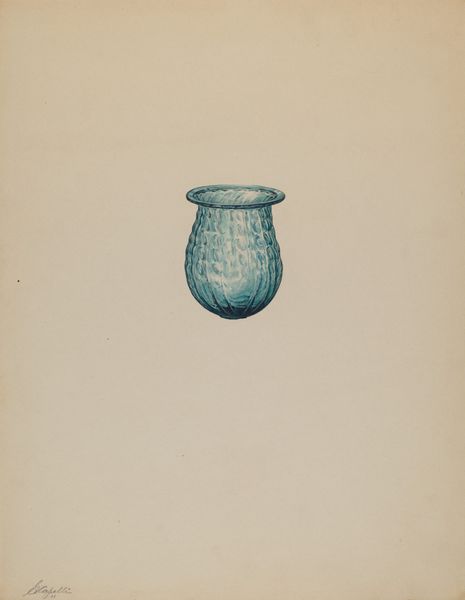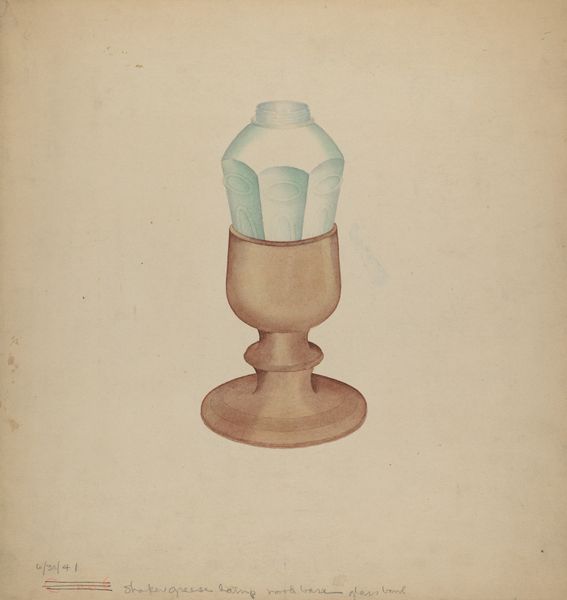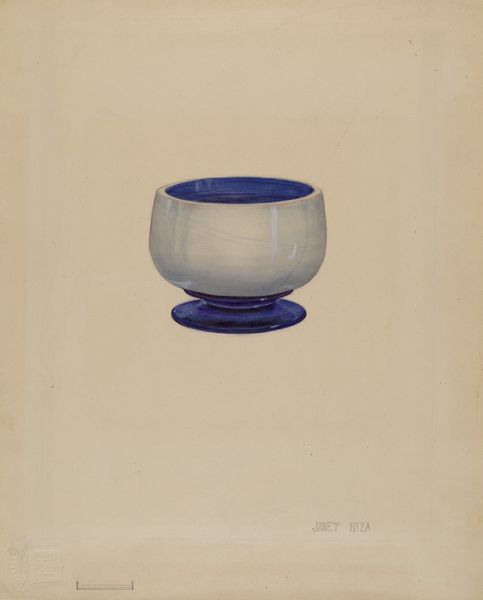
drawing, watercolor
#
drawing
#
water colours
#
watercolor
#
geometric
Dimensions: overall: 30.5 x 22.8 cm (12 x 9 in.)
Copyright: National Gallery of Art: CC0 1.0
Curator: Before us we have "Bowl," a watercolor drawing by John Tarantino, created sometime between 1935 and 1942. Editor: It has such a fragile, almost ethereal quality. The blues are so delicate, and that light… it gives the impression of something precious, like blown glass. Curator: Absolutely. It's fascinating to consider this bowl not just as a representation but as a physical object rooted in labor. Where was this glass produced? Were these bowls for the masses or solely for an elite consumer base? Examining the means of production asks if the act of creating these wares played a role in the design’s reception and cultural status. Editor: It prompts consideration of accessibility and status, doesn’t it? Who had access to these sorts of delicate objects in the late 1930s? Were they symbols of aspirational middle-class status, especially during the Depression era? Could this drawing be viewed as an attempt to democratize access to beauty by capturing the elegance of the bowl through an accessible medium like watercolor? Curator: Indeed, the chosen medium itself offers much. Watercolors allow for a certain translucence, which mirrors the bowl's actual material qualities. Consider also the artist’s decisions in employing watercolor techniques to portray textures and gradients; it signifies the labour, but also the skill in portraying and manipulating light. Editor: And it reminds us that even mundane objects like bowls carry symbolic weight. Glass, in particular, can be associated with fragility, transparency, and even hidden dangers—consider the common visual trope of the ‘glass ceiling.’ Is Tarantino pointing to something beyond mere function, hinting perhaps at broader societal precarities and vulnerabilities through this single object? Curator: Very insightful! Thinking of it as metaphor invites a broader conversation about everyday material and how our lives are imbricated by its production. Editor: This piece shows us how considering artworks as sites for examining histories of class, identity, and production reveals broader social currents in play during the artwork’s creation. Thank you for highlighting this context. Curator: My pleasure! Considering the intersection of production, material, and daily life has deepened my understanding of how our lives connect to objects.
Comments
No comments
Be the first to comment and join the conversation on the ultimate creative platform.
